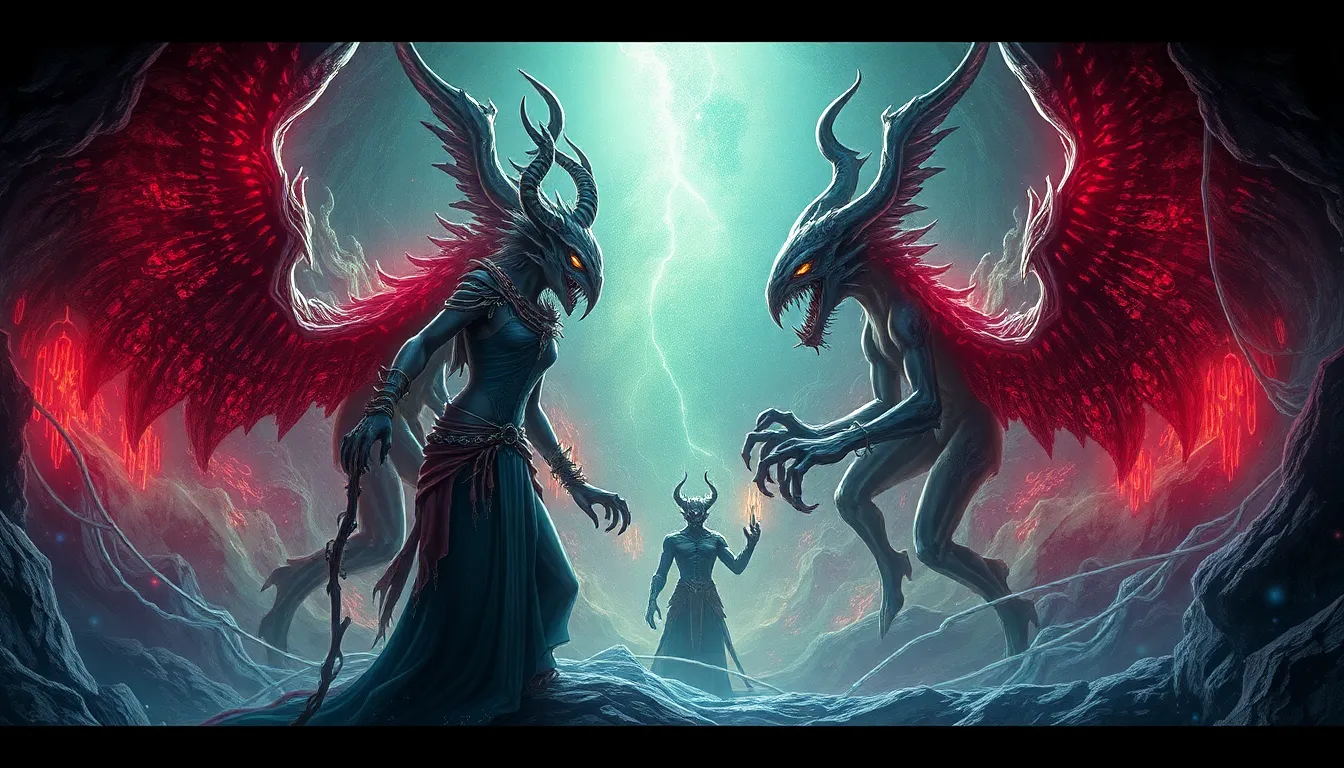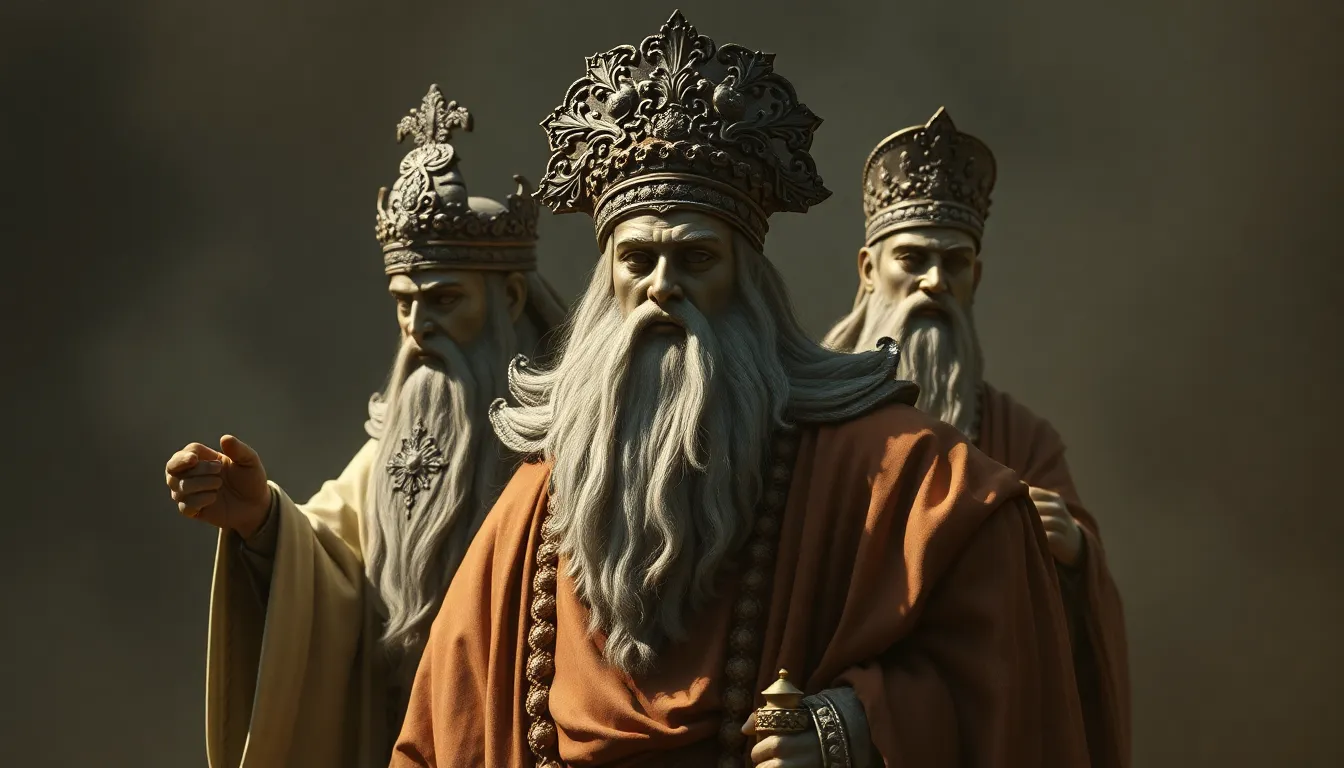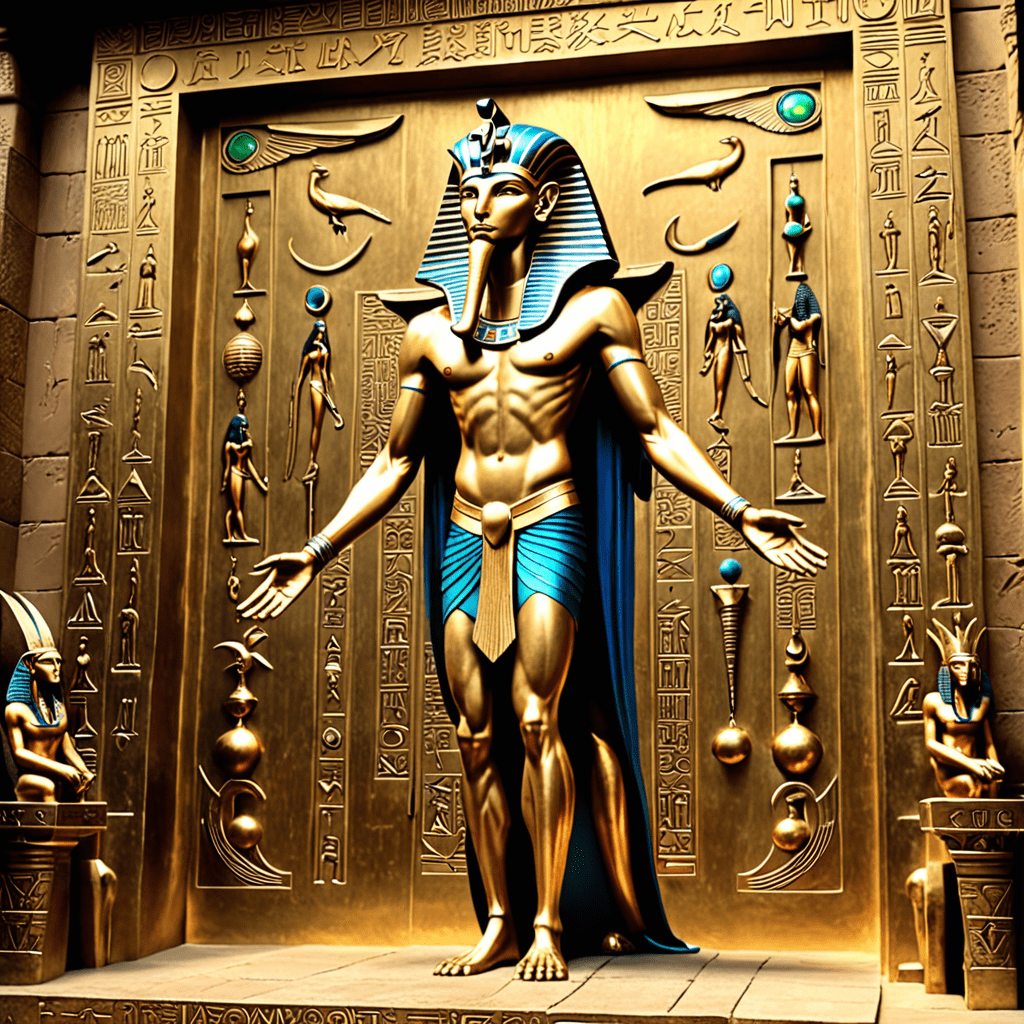Chthonic Tales: The Enigmatic Beings of the Underworld
I. Introduction to Chthonic Mythology
Chthonic beings are entities that reside in the underworld, often associated with the dead, the afterlife, and the earth beneath our feet. These beings play significant roles in various mythologies, representing not just death but also the cyclical nature of existence. The underworld is a critical component of many cultures’ belief systems, serving as a realm where souls transition after death and where earthly concerns are echoed in the afterlife.
This article aims to explore the rich tapestry of chthonic mythology, examining the historical context, notable deities, symbolism, literature, folklore, rituals, psychological interpretations, and contemporary relevance of these enigmatic beings.
II. Historical Context of Underworld Beliefs
A. Ancient civilizations and their views on the afterlife
Throughout history, ancient civilizations have held diverse beliefs regarding the afterlife. For instance:
- The Egyptians believed in a detailed judgment process, with Osiris presiding over the weighing of the heart against a feather.
- The Greeks envisioned a more ambiguous afterlife, where souls would dwell in Hades, a realm divided into various areas such as Elysium for the virtuous and Tartarus for the damned.
- In Norse mythology, the afterlife was represented through several realms, including Valhalla for warriors and Hel for those who did not die in battle.
B. Evolution of chthonic myths through time
Chthonic myths have evolved significantly from ancient times to the present day. Initially, many cultures viewed the underworld with fear and reverence, creating intricate rituals to appease its deities. Over time, these myths began to reflect changing societal values, leading to a more nuanced understanding of death and the afterlife.
C. Comparison of underworld depictions across cultures
Comparing chthonic myths across cultures reveals fascinating similarities and differences. Some common themes include:
- The existence of a central chthonic deity (e.g., Hades, Osiris, Yama).
- Rituals and offerings made to appease these deities.
- Beliefs concerning the soul’s journey after death.
III. Notable Chthonic Deities and Their Roles
A. Hades: The Greek god of the underworld
Hades, one of the Olympian gods, rules the underworld, which bears his name. He is often misunderstood as a malevolent figure; however, he is more of a stern guardian of the dead, ensuring the balance between life and death.
B. Osiris: The Egyptian god of the afterlife
Osiris is a central figure in Egyptian mythology, representing resurrection and the afterlife. He was once a king of Egypt, murdered by his brother Seth, and later resurrected by his wife, Isis. Osiris symbolizes the promise of rebirth and the cyclical nature of life.
C. Yama: The Hindu god of death
In Hindu mythology, Yama is the god of death and the ruler of Naraka, the realm of the dead. Yama is often depicted as a stern figure who guides souls to their next incarnation, emphasizing the belief in karma and reincarnation.
D. Other significant chthonic figures from global mythologies
Several other chthonic figures appear across various cultures, including:
- Persephone (Greek) – queen of the underworld, representing the seasonal cycle of life and death.
- Pluto (Roman) – equivalent of Hades, overseeing the souls in the underworld.
- Hel (Norse) – the goddess who rules over the realm of the same name, where those who did not die in battle reside.
IV. The Symbolism of Chthonic Beings
A. Representations of death and rebirth
Chthonic beings often embody the duality of death and rebirth. They serve as reminders that death is not an end but a transition, leading to new beginnings. For instance, Osiris’s resurrection story symbolizes the eternal cycle of life.
B. Associations with fertility and the earth
Many chthonic deities are linked to fertility and the earth, demonstrating the interconnectedness of life and death. For example, Persephone’s annual descent into the underworld is allegorically tied to the agricultural cycle, influencing planting and harvest times.
C. The duality of creation and destruction
The symbolism of chthonic beings often reflects the dual nature of existence. They can be seen as both creators and destroyers, embodying forces that lead to life through decay and regeneration.
V. Chthonic Tales in Literature and Art
A. Examples of chthonic themes in ancient literature (e.g., Homer, Virgil)
Chthonic themes permeate ancient literature, where authors explore the complexities of death and the afterlife. Notable examples include:
- Homer’s “Odyssey,” particularly the descent to the underworld.
- Virgil’s “Aeneid,” which describes Aeneas’s journey to the underworld and his encounters with various souls.
B. Modern interpretations in literature and film
Contemporary literature and film continue to draw upon chthonic themes, exploring the human condition and the afterlife. Works such as Neil Gaiman’s “American Gods” and films like “The Sixth Sense” delve into the complexities of life, death, and the realms beyond.
C. Artistic representations of chthonic beings throughout history
Art has long depicted chthonic beings, from ancient sculptures of Hades to modern interpretations in graphic novels and films. These representations serve to visualize the abstract concepts of death and the afterlife, making them more relatable and tangible.
VI. Chthonic Beings in Folklore and Oral Traditions
A. Regional folklore featuring underworld beings
Folklore around the world often features stories of chthonic beings. For instance:
- In Slavic folklore, the figure of Baba Yaga serves as a guide to the underworld.
- Mesoamerican traditions feature the god Mictlantecuhtli, ruler of the underworld.
B. The role of storytelling in preserving chthonic myths
Storytelling plays a crucial role in preserving chthonic myths, passing down knowledge and cultural values from generation to generation. These narratives often serve as cautionary tales or moral lessons regarding life and death.
C. Variations in tales and their cultural significance
The variations in chthonic tales across cultures highlight their specific societal values and beliefs. For example, the treatment of the dead and the afterlife significantly differs between cultures, reflecting their unique views on mortality.
VII. Rituals and Practices Related to Chthonic Beings
A. Ancient rituals to appease the underworld deities
Ancient civilizations performed various rituals to appease chthonic deities, such as:
- Offerings of food and drink.
- Funeral rites and burial customs.
- Festivals honoring the dead, such as the Roman Parentalia.
B. Modern practices and beliefs surrounding death and the afterlife
Many modern practices still reflect ancient beliefs about the afterlife, including:
- Memorial services to honor deceased loved ones.
- Rituals such as Día de los Muertos in Mexico, celebrating and remembering the dead.
C. The significance of burial practices in chthonic worship
Burial practices have deep-rooted significance in chthonic worship, as they reflect beliefs about the afterlife and respect for the dead. Different cultures have developed unique burial customs, from elaborate tombs to simple graves, each carrying its own meaning.
VIII. Psychological Interpretations of Chthonic Myths
A. Carl Jung and the collective unconscious
Carl Jung’s theories on the collective unconscious suggest that chthonic symbols tap into universal archetypes shared across cultures. These myths resonate with fundamental human experiences related to death, fear, and the unknown.
B. Chthonic symbols as archetypes of human experience
Chthonic beings often represent deep psychological themes, such as:
<ul



